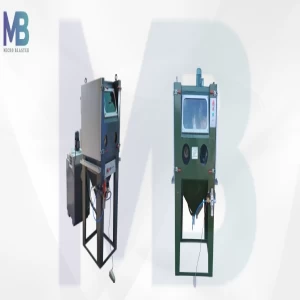
HVOF Gun
HVOF gun process utilizes oxygen, fuel gas, & air to supply a high-pressure annular flame, which delivers actually heat of the axially introduced powder spray material. The gas stream is stimulated via a connecting/diverging nozzle to supersonic velocities. The gas stream moves the powder particles towards the substrate. Different particles impair plastically upon impact, Hard communing the coating to the substrate. These high velocity oxygen fuel coatings are extremely thick, with lower porosity, predictable chemistries, & fine, uniform microstructures. The axial powder injection concentrates coating material within middle of the flame, decreasing coating material buildup on the walls of the comprehensive air cap & minimizing wear.

HVOF Gun Specifications
| Fuel Gas | Propane, Propylene |
| Rated power | 110 KW |
| Porosity | 1% |
HVOF Gun Manufacturer
HVOF gun manufacturer offers efficient operation, using less process gas compared to additional spray guns. the quality, water-cooled guns utilize minimum quantities of water, with only potable (drinking water) quality required at line pressures as low as 2.76 bar (40 psi). Material spray rates, counting on gun configuration and material applied, are often as high as 150 g/min (20 lb/h), thus reducing spray times.
For More details about the acoustic chamber Visit our Website Page.
HVOF Gun Design
HVOF gun is constantly classified into two groups, (a) a throat combustion burner and (b) a chamber combustion burner. The HVOF manufacturer gun utilized in present research features a enclosure combustion burner. Most difference between 2 groups is location of the combustion.
- Throat Combustion Burner- Throat combustion burners were the prior sort of high velocity oxygen fuel spray gun to be constructed, The fuel & oxidant combust within barrel, as these systems don't have a separate combustion compartment. The powder is usually infiltrated axially, Initially, burners were water-cooled, by surrounding barrel with flowing water. Then the system was modified to utilize air instead of water, Air-cooled spray gun are simpler & to include a lower weight due to the density of air & water. Both the air also water-cooled throat combustion burners have lower heat loss than chamber combustion burners, because of decreased surface area.
- Chamber Combustion Burner- In this, fuel gas is introduced into a combustion enclosure with a bigger diameter than that of an applicator barrel. The combustion chamber is both at a right angle or a straight-through orientation with the barrel. Powder injection could also be axial, radial, or central, There also are some enclosure combustion burners, where powder is infiltrated beyond flame at the start of the barrel.
HVOF Coating Process
The HVOF Coating process utilizes a combination of thermal also K.E. for melting & accelerating powder particles, so as to deposit the specified coating. Hydrocarbon gases or purified hydrogen are normally employed because of fuel gas. The hvof spray gun consists of three units: a mixing zone, a combustion zone, & therefore sandblasting nozzle. Combustion & gas dynamics are important characteristics in growing coatings. They affect high velocity oxygen fuel coating quality within the following two ways:
- The particles infiltrated into gas stream must be revved so as to strike target at a heightened velocity.
- Warmness transfer to bits from gas stream is required to melt them before impact.
For more information about Hvof Coating Process visit our Website.
| Fuel Gas | Hardness (HV 0.3) | Roughness (μm) | Porosity(%) | Strength(MPa) |
| Hydrogen | 1093 | 2.20 | <1 | >70 |
| Propylene | 1065 | 2.45 | <1 | >70 |
| Natural Gas | 1114 | 2.97 | <1 | >70 |
| Liquid Propane | 1016 | 2.52 | <1 | >70 |
Advantages of HVOF Coating
- More consistent & efficient particle heating, due to the heightened turbulence encountered by the particles.
- Much more concise exposure time in flight due to high particle speeds.
- Sharp particle direction time in ambient air, once the jet & particles ditch the hvof spray gun, which results in more inferior surface oxidation of particles.
- Lower flame temperature compared with plasma spraying.
- Lower maximum particle temperatures corresponded to different processes.
- Lower capital cost & relief of usefulness compared to different processes.
- Thicker coatings than with plasma & arc spraying can be created.
Benefits of HVOF Coating
| Coating benefit | Main reasons for this benefit |
| Higher density (Lower porosity) | Higher impact energy |
| Improved corrosion barrier | Less porosity |
| Higher hardness ratings | Better bonding, less degradation, denser coatings |
| Improved wear resistance | Harder, tougher coating |
| Higher bond and cohesive strength | Improved particle bonding |
| Lower oxide content | Less in-flight exposure time to air |
| Fewer unmelted particle content | Better particle heating |
| Greater chemistry and phase retention | Reduced time at a higher temperature |
| Thicker coatings | Less residual stress |
| Smoother as-sprayed surface | Higher impact energies |
HVOF Gun Manufacturer in India
The leading HVOF gun manufacturer and supplier of high velocity oxygen fuel spray guns, Thermal Spray Gun, Metalizing Gun, Flame Spray Gun, and Zinc Spray Gun. The products are thoroughly tested by the quality department & rigorous development is achieved by a qualified design team in bringing new concepts.
- Delivery Time- Minimum Time
- Port Of Dispatch- Thar Dry Port
- Production Capacity- 2-3 Per Month
- Packaging Details- Box
- Payment Terms- L/C (Letter of Credit)/T/T (Bank Transfer)
